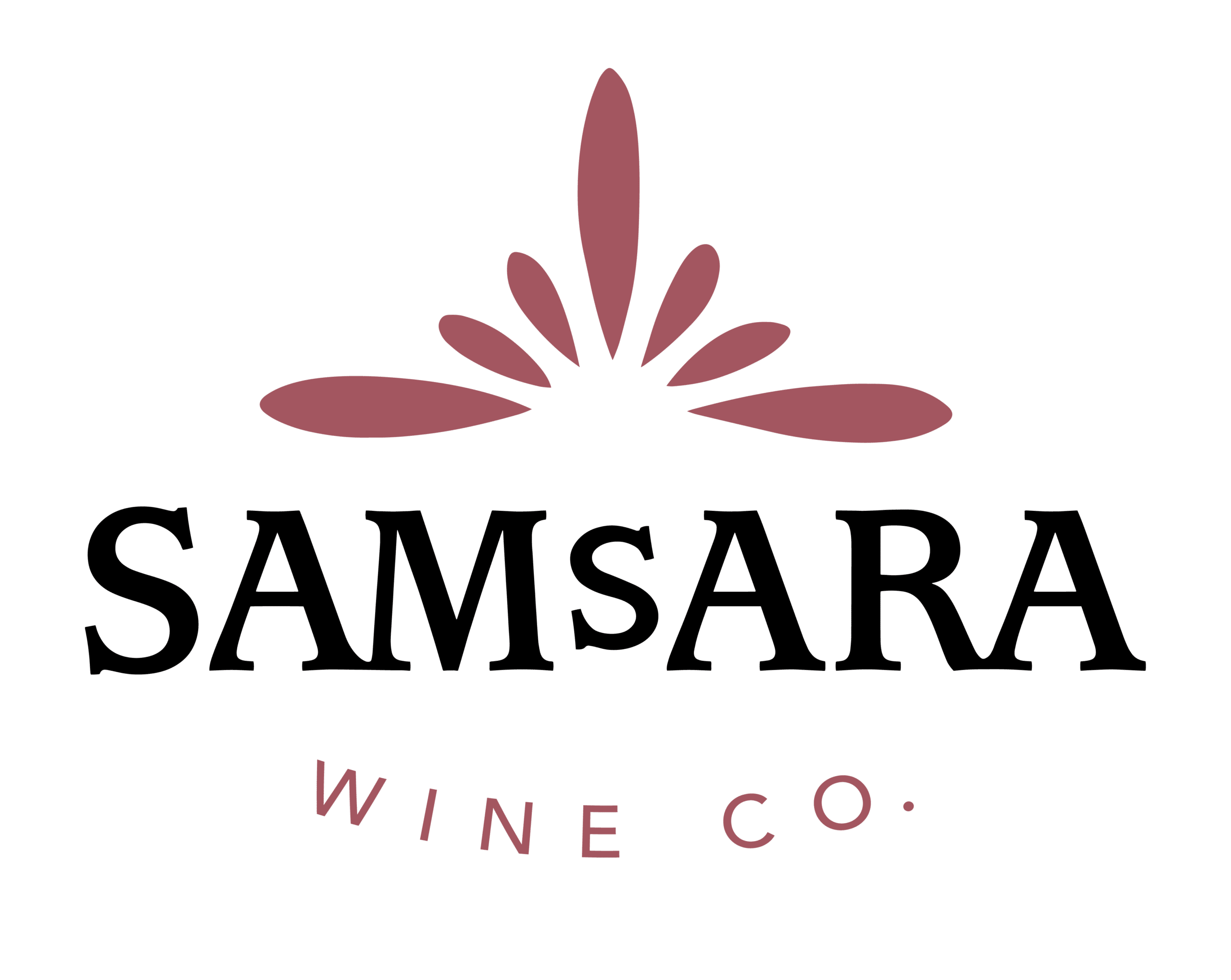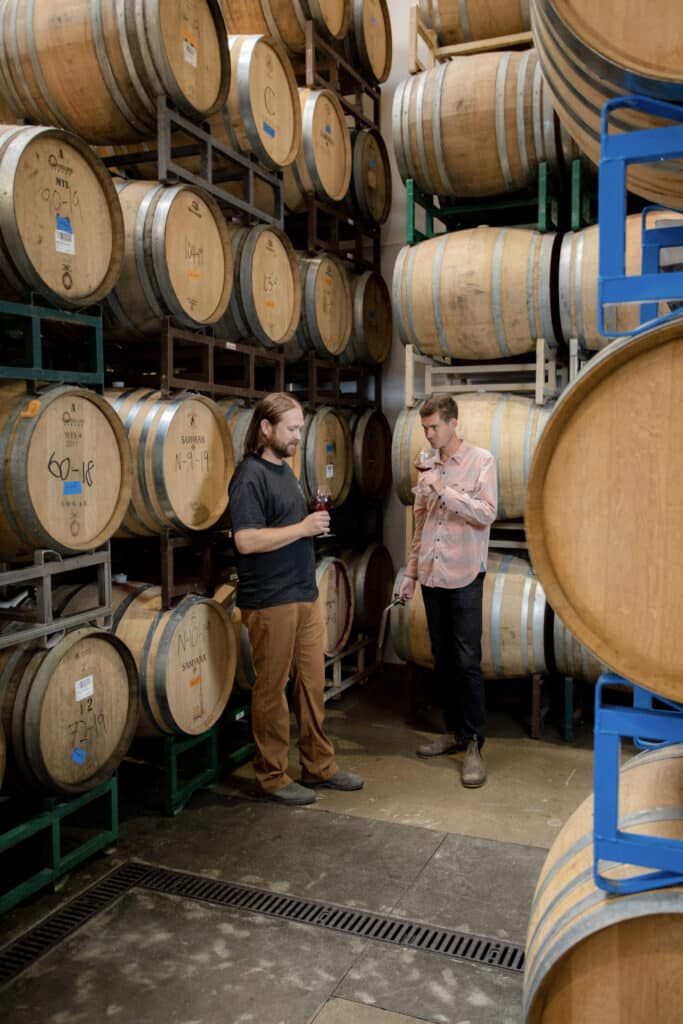No products in the cart.
New Oak Barrels vs Neutral Oak Barrels
Whether you’re a seasoned wine aficionado or newly discovering the expansive world of wine, you probably want to know what role new vs neutral oak has on the wine you’re drinking and how/why the winemaker chose to use either or both. We’re happy to explain not only the general principles associated with the use of new vs. neutral oak in winemaking, but also our philosophy of oak use here at SAMsARA.
NEW OAK BARRELS
When wine is aged or matured in new oak barrels, it absorbs some of the wood’s flavors and aromas. Depending on where the oak was grown (France or America), the characteristics imparted on the wine by the barrel differ. You may be familiar with new oak use in Cabernet Sauvignon from Napa Valley or Shiraz from Australia. The use of a high percentage of new oak barrels can impart flavors of toast, vanilla, baking spices, coffee, caramel, maple, and/or smoke on these wines.
Wine pulls these flavors and aromas from new oak barrels in a relatively short period of time and barrel’s flavoring ability diminishes as it is used. Barrels are deemed to be “neutral”, or imparting no flavor/aroma, after three years, as long as they have held wine in them most of that time. Once neutral, the ability of the barrel to impart oak flavorings is minimal.
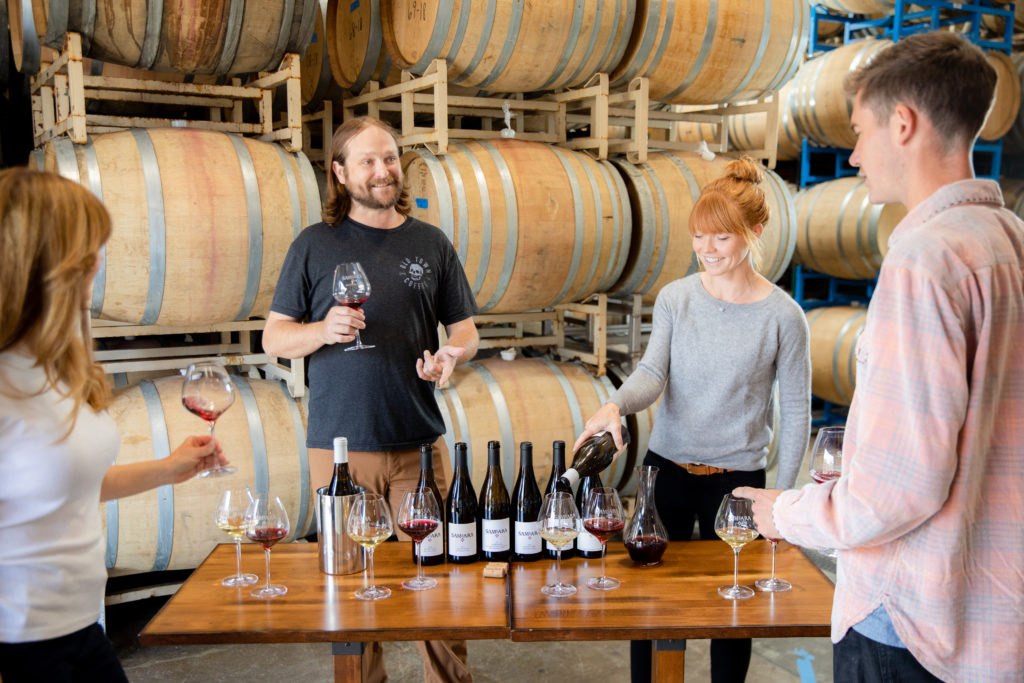
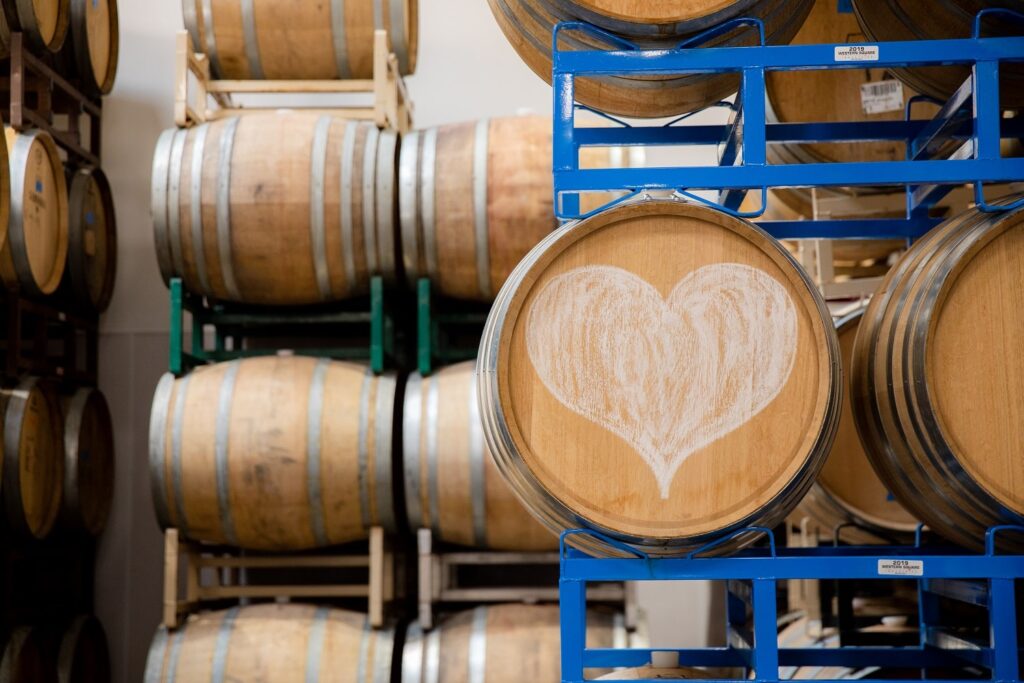
NEUTRAL OAK BARRELS
While neutral oak barrels no longer impart flavors, they still play an important role in the part of wine maturation that pertains to the introduction of oxygen to the wine. Neutral oak barrels are able to hold liquid without leakage, however a miniscule amount of oxygen does, in fact, permeate the wood. This oxygen seepage has a big impact on the natural chemical conversions that wine undergoes during maturation. Compared to their new counterparts, neutral barrels have both reduced oak extraction and oxygenation making neutral oak an excellent medium to both help maintain the fruit qualities of more delicate wines and soften wines with a high tannic aspect. Once neutral, the barrel no longer imparts wood flavors, but is still a perfect aging vessel as it allows for micro-oxygenation of the wine throughout elevage, allowing for the wine to mature and flavors to integrate.
AMERICAN AND FRENCH OAK BARRELS
The majority of the world’s finest wines are aged in oak barrels, with France and American oaks being the most used wood sources. Though barrels are made from the same genus of white oak, that’s where the similarities end.
American Oak Barrels
American oak is twice as dense as French, carrying greater spice and wood sugar compounds that slowly extract and fill out a wine’s body. American Oak has a loose grain and adds strong flavors like coconut and dill to finished wines. American oak is widely used in Spain for Tempranillo (especially in Rioja), and iconic winery Silver Oak in Napa uses exclusively American Oak. While American oak barrels can weigh twice as much as their French counterparts, they cost about half the price to purchase.
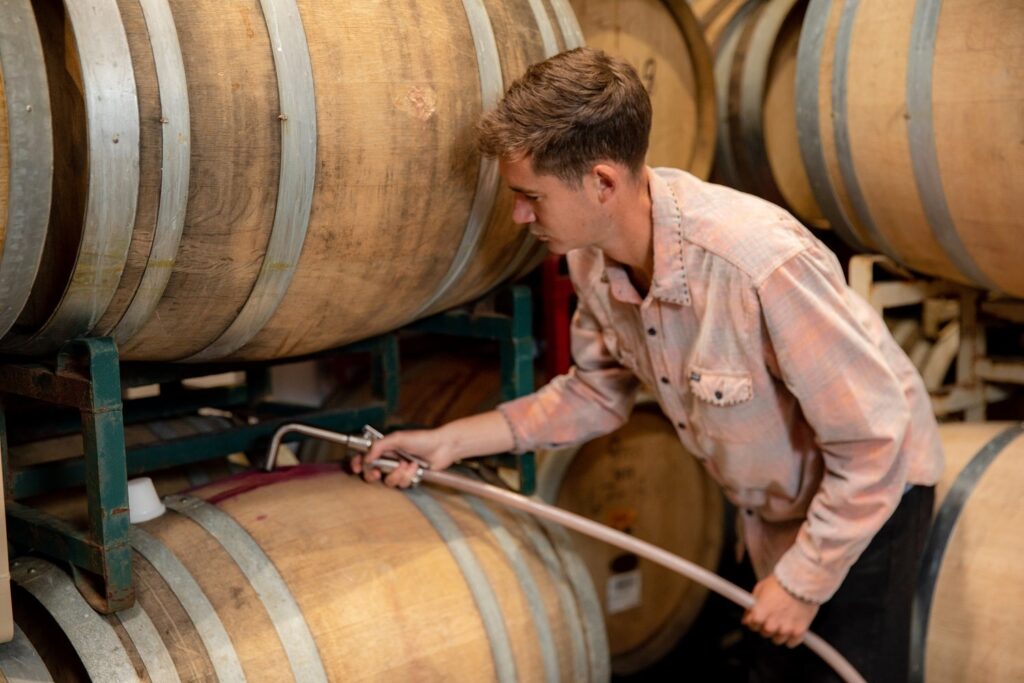
French Oak Barrels
French oak has more tannin and lighter grape varieties, like pinot noir, seem to do better in tannin-rich French oak. French Oak has tighter-grained wood structure, which imparts subtler tastes like aromatic spices, cocoa, and coffee. French Oak grain is less coarse, contributing to wines with subtle, spicy and smooth, satiny or silky qualities.
New Oak, regardless of its origin, is used to accelerate the softening of high tannin wines like Cabernet Suvignon and can produce a more rounded wine at a younger age. For example, modernists in Barolo use new oak on Nebbiolo (a high tannin grape) so they can release it earlier, whereas traditionalists only used large-format neutral oak, but therefore need to age the wines for significantly longer before they are ready for consumption. (The only way you can make drinkable ripe, young Napa Cab is to throw some oak/staves/chips on it).
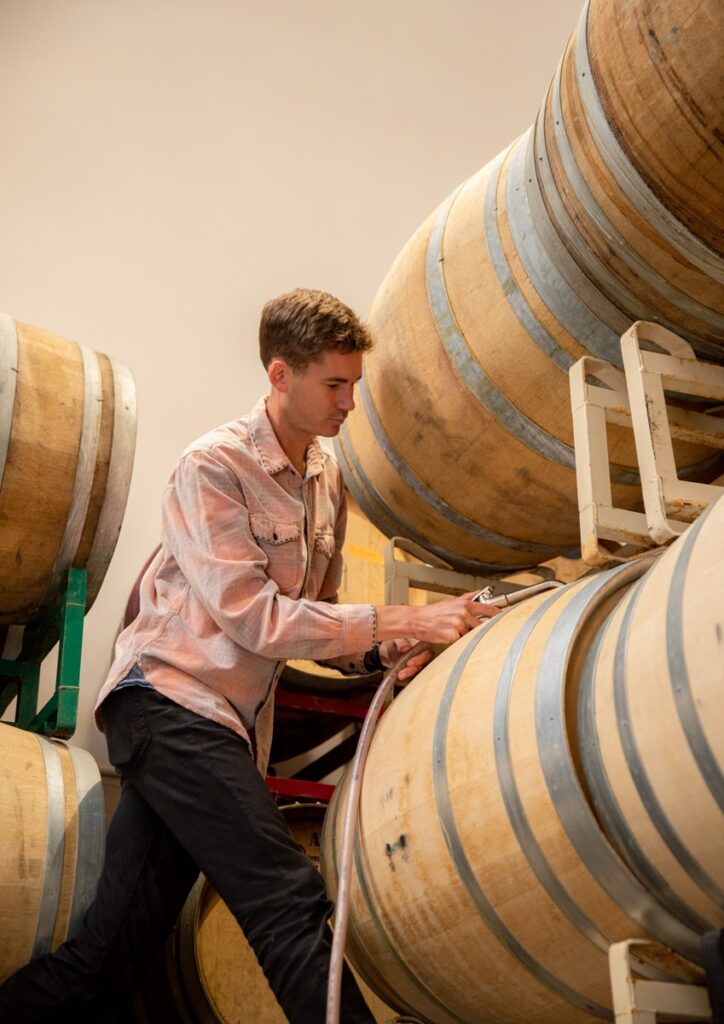
THE SAMSARA OAK BARREL PHILOSOPHY
First, all of the barrels we use are French oak. The flavors and texture of American oak just does not jive with our style of low intervention winemaking. All of the core varietals we use are from France and we like to make wine in a more traditional style, so use French oak.
Second, we only use new French oak barrels with a small percentage of our wines. We use 100% neutral French oak on all our Chardonnay, Syrah, and Grenache wines and between 20-30% new French oak barrels with our Pinot Noirs.
For us, the perfect amount of new oak influence for our Pinot Noir is when it enhances the wine in a supporting role, but is never the dominant character.
Through experience, we have found that having a baseline of 20-30% new oak for our Pinot Noir program is where we start the conversation, with a little bit of flex up or down depending on the fruit we receive.
With vineyard sites and/or vintages where crop yields are a little lower and the fruit is more concentrated and tannic, we ask ourselves, “Does this wine have the density and the concentration to be enhanced by a little bit more new oak (without overwhelming it)?”
Conversely, our most elegant and delicate Pinot grapes get less new oak treatment to avoid overwhelming their more floral, brighter characters.
Next, our new French oak barrels are 500-liter capacity (more than twice as large as typical barrels). The reason we use these bigger barrels is that the wines in 500L barrels keep a little more freshness, vitality, and youthfulness while also retaining the traditional advantages of oak aging (smoothing out a wine’s texture and imparting a touch of additional weight on the palate).
All in all, our use of new oak barrels is quite conservative in the world of winemaking. That is because oak is a winemaker’s tool, not a reflection of fruit or terroir and we want our wines to impart a sense of place more than the winemaker’s touch.
For the vast majority of our wine production, we use neutral oak barrels. Instead of using an inert vessel like stainless steel or concrete, we use neutral oak because the barrels “breathe”. The wine therein retains contact with the outside world, and the limited amount of oxygen passing through the wood will soften the wines and enable them to develop in the manner in which we desire.
